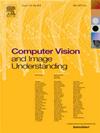Brain tumor image segmentation based on shuffle transformer-dynamic convolution and inception dilated convolution
IF 4.3
3区 计算机科学
Q2 COMPUTER SCIENCE, ARTIFICIAL INTELLIGENCE
引用次数: 0
Abstract
Accurate segmentation of brain tumors is essential for accurate clinical diagnosis and effective treatment. Convolutional neural networks (CNNs) have improved brain tumor segmentation with their excellent performance in local feature modeling. However, they still face the challenge of unpredictable changes in tumor size and location, because it cannot be effectively matched by CNN-based methods with local and regular receptive fields. To overcome these obstacles, we propose brain tumor image segmentation based on shuffle transformer-dynamic convolution and inception dilated convolution that captures and adapts different features of tumors through multi-scale feature extraction. Our model combines Shuffle Transformer-Dynamic Convolution (STDC) to capture both fine-grained and contextual image details so that it helps improve localization accuracy. In addition, the Inception Dilated Convolution(IDConv) module solves the problem of significant changes in the size of brain tumors, and then captures the information of different size of object. The multi-scale feature aggregation(MSFA) module integrates features from different encoder levels, which contributes to enriching the scale diversity of input patches and enhancing the robustness of segmentation. The experimental results conducted on the BraTS 2019, BraTS 2020, BraTS 2021, and MSD BTS datasets indicate that our model outperforms other state-of-the-art methods in terms of accuracy.
基于洗牌变换-动态卷积和初始扩张卷积的脑肿瘤图像分割
脑肿瘤的准确分割是临床准确诊断和有效治疗的关键。卷积神经网络(Convolutional neural networks, cnn)在局部特征建模方面的优异表现改善了脑肿瘤的分割。然而,他们仍然面临着肿瘤大小和位置不可预测变化的挑战,因为基于cnn的方法无法有效匹配局部和规则的接受野。为了克服这些障碍,我们提出了基于shuffle变换-动态卷积和初始扩张卷积的脑肿瘤图像分割,通过多尺度特征提取捕获和适应肿瘤的不同特征。我们的模型结合了Shuffle变换-动态卷积(STDC)来捕获细粒度和上下文图像细节,从而有助于提高定位精度。另外,Inception Dilated Convolution(IDConv)模块解决了脑肿瘤大小发生显著变化的问题,进而捕获不同大小物体的信息。多尺度特征聚合(MSFA)模块集成了来自不同编码器层次的特征,丰富了输入补丁的尺度多样性,增强了分割的鲁棒性。在BraTS 2019、BraTS 2020、BraTS 2021和MSD BTS数据集上进行的实验结果表明,我们的模型在准确性方面优于其他最先进的方法。
本文章由计算机程序翻译,如有差异,请以英文原文为准。
求助全文
约1分钟内获得全文
求助全文
来源期刊

Computer Vision and Image Understanding
工程技术-工程:电子与电气
CiteScore
7.80
自引率
4.40%
发文量
112
审稿时长
79 days
期刊介绍:
The central focus of this journal is the computer analysis of pictorial information. Computer Vision and Image Understanding publishes papers covering all aspects of image analysis from the low-level, iconic processes of early vision to the high-level, symbolic processes of recognition and interpretation. A wide range of topics in the image understanding area is covered, including papers offering insights that differ from predominant views.
Research Areas Include:
• Theory
• Early vision
• Data structures and representations
• Shape
• Range
• Motion
• Matching and recognition
• Architecture and languages
• Vision systems
 求助内容:
求助内容: 应助结果提醒方式:
应助结果提醒方式:


